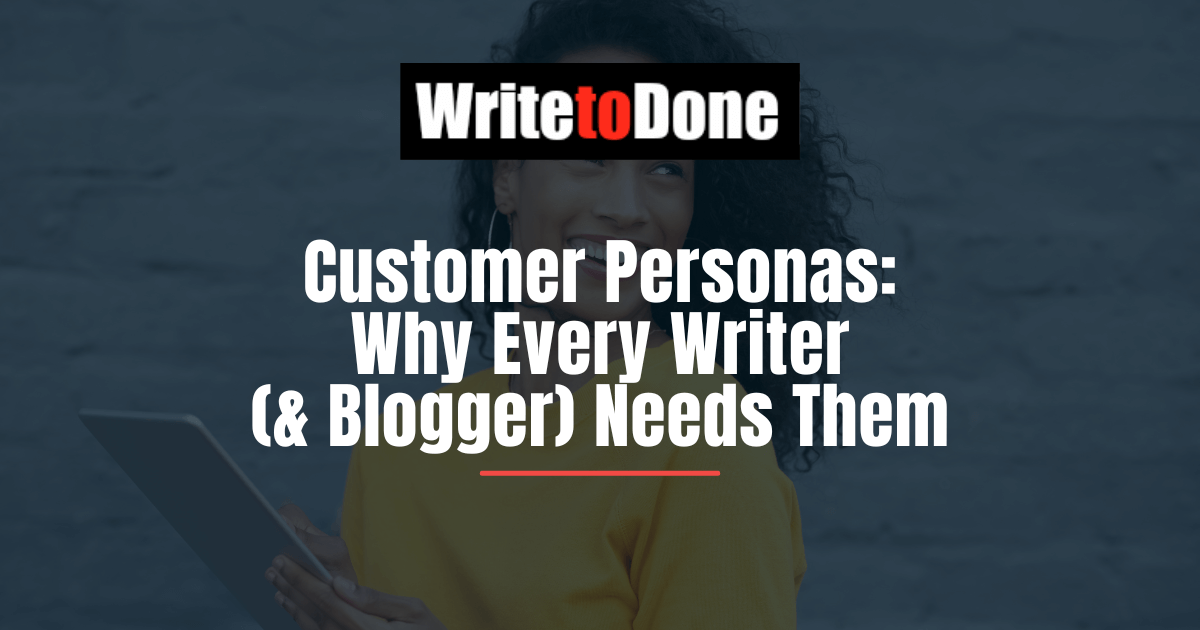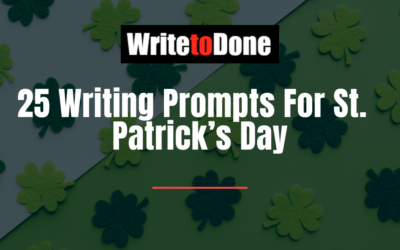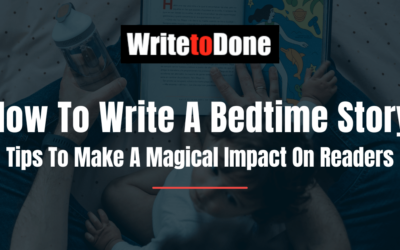Editor’s Note: Customer personas, none of your business, right? They’re for hardcore B2B, not bloggers and writers.
Actually, I disagree. Each time I’ve written a book, I’ve created a customer persona first, although I might have called mine a reader persona.
Here’s a top tip: They’re the same thing 🙂 You’re reader is you’re customer. So if you’re a novelist, or poet, or non-B2B blogger, substitute the phrase ‘customer personas’ for ‘reader personas’ and find out how to sell more of, well, everything…
Customers are the lifeline of your business. That’s why you need to spend more time and use various resources to better understand the people buying the solution that you are creating.
If you are a writer or a blogger and write for businesses, you probably understand the value of customer personas. Creating authentic customer personas and writing accordingly means that your content will interest and engage.
Doing otherwise will result in little or no engagement.
The process of creating an understanding of your customers is known as creating customer personas.
What is Customer Persona?
A customer persona is a fictional archetype representing the key traits of your audience, based on the data you’ve collected about your real audience.
It gives you important insights into how your prospective customers think and behave as they try to address a particular problem. To be more specific, customer persona informs you why a prospective customer can choose your product/service or any of your competitors’ products or services while making an important buying decision.
Why is it Important to create a Customer Persona?
If you are a freelance writer and write for B2B or B2C companies, it is even more important to understand your prospects and create authentic buyer personas. If freelance writers create authentic customer personas, they can benefit in the following ways:
1. They can develop a deeper understanding of customer’s needs and create content that solves their problem.
2. They can better understand which projects, campaigns and initiatives would be more fruitful to engage the target customers of your clients.
3. They can initiate and contribute to the knowledge which inspires and entertains. In other words, they can create authentic content for their target customers.
4. They can modify their tone and style according to their customers’ preferences
According to a Netprospex case study, creating appropriate customer personas resulted in:
· “100% increase in the number of pages visited
· 111% increase in email open rate
· 171% increase in marketing-generated revenue
· 46% increase in conversion “
Similarly, 71% of companies who exceed revenue and lead goals have documented authentic customer personas.
These facts highlight the significance of creating customer persona for driving more revenue for a business.
Furthermore, you can create and recreate your customer persona many times according to your research and findings of your existing customers. The process is simple yet demanding because it requires a keen understanding of your customers’ pain points and the probable solutions they are looking for.
How I (Re) created Customer Persona for my First Business
I started my first business when I was 13. I designed and sold painted glass bottles at a 10-day long school fair. The stalls were set up in the playground and the parents and students could visit them after school or during recess. The students were asked to come up with creative ideas to create and sell anything. The profit would go to charity for supporting the flood victims in Upper and lower Punjab.
I had a passion for glass painting at that time. I had painted every single glass in our house, experimented with all different kinds of paints. I even tried creating my own paint for different effects. I managed to find a few empty bottles from our house and from our neighbors (empty jars of jam, juice, pickles, ketchup you name it.) After washing and cleaning them, I painted 10 of them with floral patterns and made them vases and decoration pieces.
My customer persona was a 35-year-old mother who would like to have some inexpensive decoration pieces. On the first day of sale, I failed to sell a single bottle to any of the mothers. On the contrary, my painted bottled interested kindergarteners and First graders. They wanted those bottles to keep their pencils and other stuff but considered them a little expensive (I sold one bottle for Rs. 7) I could sell three bottles that day but learned a lot.
I decided to make huge changes in my product as well as my strategy. It was because I had recreated my customer persona. It’s not 35-year-old mothers anymore but 5-year-old kids.
I stayed awake that night and painted ten more bottles, not with floral patterns but with emojis, dolls, balls, candies, ducks, cartoon characters, anything that I thought would interest 5 to 8-year-old kids. I used brighter colors, chose a smaller pattern and filled up space with glitter and stickers. Since I didn’t work hard on the complicated floral patterns, I reduced the price of bottles to Rs. 5 each. I even wrote my first copy- a card which I placed pasted on the table where I displayed those bottles: “Bottles to keep your stationery, cut-outs, stickers, and collections. Loot sale! 1 bottle for Rs. 5)
The next day was one of the most amazing days of my life. I sold all the bottles in only an hour after they were displayed. For the rest of the day, the kids would keep showing up at the table and enquiring if they could pay in advance to be sure to get their bottles the next day. My painted bottles were a huge success, not only that year but for the next three years till I graduated.
Fast forward to today, I am a 34-year-old woman trying to set up my freelance writing business. I still consider the experience of setting up my first business as highly valuable.
I learned to create and recreate my customer persona as a result of a research-based process.
I also learned to be flexible with the design of my product and marketing according to customer persona.
Whenever I try to set up a new gig today, I start with the customer persona.
The process I use for creating a customer persona is as follows:
Steps to Create an Effective Customer Persona
Always remember that your customer personas are not just some pile of demographic information. Rather they are like the characters in the book with aspirations, dreams, and visions. Digging out data means that you figure out the characteristics of your customers in so much depth that they ultimately lead you to a single person. Your research should dig out the following broad categories of information about your customers:
Broad Categories of Information about your Prospects
· Understand Behavioral Drivers
These refer to your customers’ goals, what they want to achieve and how they found your business. You need to understand their pain points and why they want to buy your product.
· Map the Obstacles in Purchasing
You need to find out what stops a buyer from making a purchasing decision. For this, you need to put yourself in your customers’ shoes and understand how they see your product and service. Whether it is some lack of information or they need further assurance, you should be able to effectively communicate with your prospective buyer to help him/her in making a buying decision.
· Think Like Your Customers
To sell your product to your customers, you need to put yourself in their shoes, literally. You need to answer the following questions.
How do they value a particular product or service?
Do your customers want a refined shopping experience?
Do they value inexpensive products over some very expensive and refined products?
Furthermore, you can understand your persona’s content preferences by answering the following questions.
What are your prospects’ preferred tone and style of communication?
Do they like to read a blog post, text message, an email or watching a Youtube video?
At what time of the day, they are most responsive?
The answers to these questions can lead you to a better understanding of your customers and creating an accurate buyer persona.
How to Research Information on your Prospects?
It is important that you avoid making stereotypical assumptions and keep your customer personas as real as possible. Your research methodology could be qualitative as well as quantitative.
Qualitative Research for Creating Customer Personas
Qualitative research for creating customer personas could be done through:
· Customer Survey
· Phone and in-person interview
· Web exit Survey
Quantitative Research for Creating Customer Personas
i.Existing Customers of a Business
The quantitative research could be done by going through the database for existing consumers/customers of the business. You can start with the following information about your existing customers to create buyer personas:
a. Age
b. Gender
c. Location
d. Income
e. Buying Behaviors
f. Interests and Activities
ii. Social Media Analytics
Social Media Analytics like Facebook Insights, Twitter Trends can easily tell who your audiences are and what they are interested in. These tools also inform you of how your prospects are interacting with your brand online. All this information is valuable to create accurate customer personas.
iii. Other Products and Services
Another way to find information about your customer personas is through other similar products and services (in other words, your competitors) By looking at their customers or buyers, you can have more information on how to create the customer personas for your products.
Final Thoughts
Customer Personas help you to understand your customers and how your product can help them. The ultimate goal of creating a customer persona is to humanize your sales content and marketing messages. Consequently, you will be able to create effective marketing campaigns that drive more revenue for your business.
















